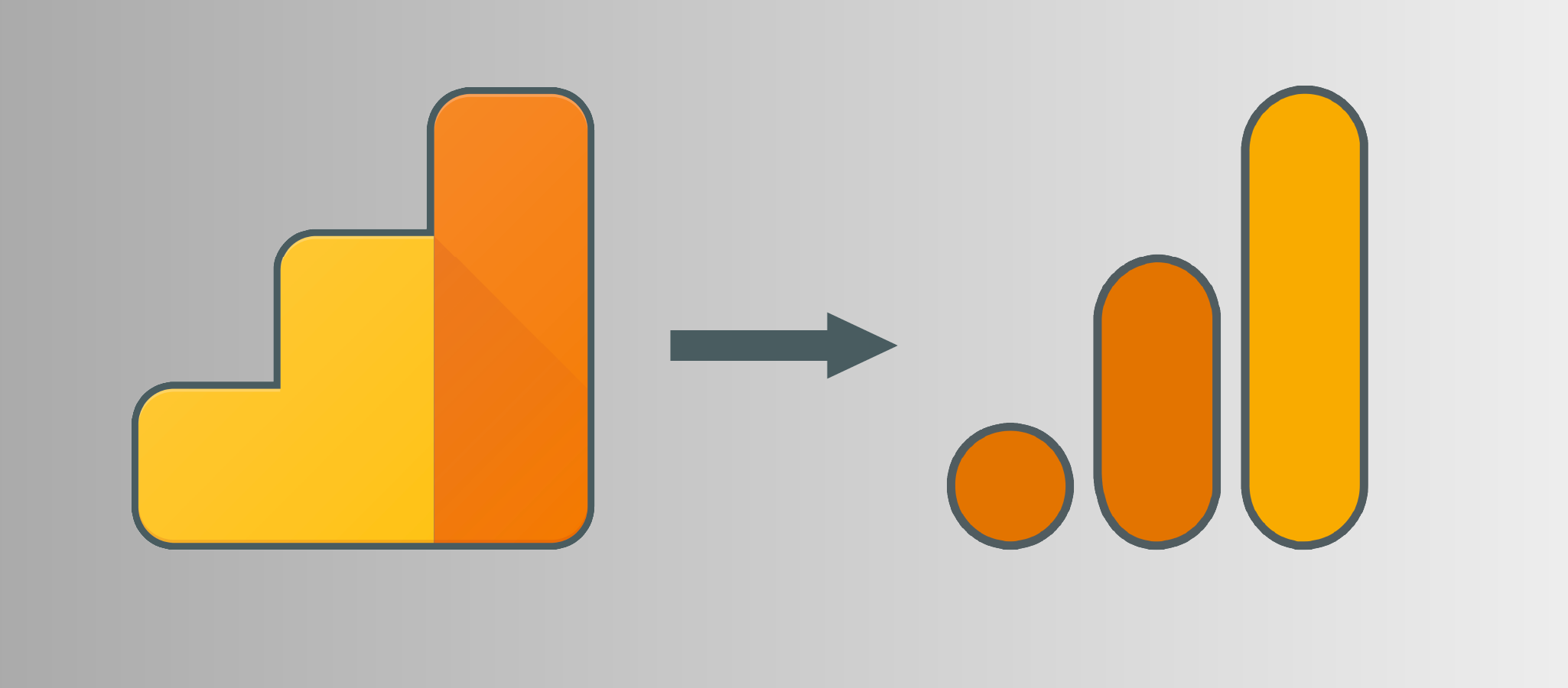
7 Tips for Migrating from UA to GA4
With Google Analytics 4, you’ll enjoy a whole range of benefits that’ll put you ahead of the competition (or so, we hope). From user-centric measurement to cross-device tracking, advanced machine learning capabilities, and improved data control and privacy, GA4 has got you covered. Plus, its seamless integration with Google Ads ensures you never miss a beat. And with futureproofing for your analytics setup, you can rest easy knowing you’re always one step ahead.
So, what are we getting with this labor-intensive switch?
1.Enhanced User-centric Measurement: GA4 prioritizes user-centric measurement over session-centric measurement. It employs an event-driven data model that enables you to monitor and analyze user interactions across various devices and platforms, granting you a more comprehensive understanding of user behavior.
Digital Agency Tip: This means you’ll have to define what you think an “event” really is, and of course from which device. Fully develop this thought with your team for best practices in utilizing GA4.
2. Cross-device and Cross-platform Tracking: GA4 allows for tracking of user interactions across a variety of devices and platforms, ranging from online to offline touch-points. This results in a better understanding of how your brand is perceived by users, providing valuable insights into their customer journey.
Digital Agency Tip: You’ll need to throw away most of the terms you’ve learned thus far and relearn them within the context of GA4. Naming conventions are not only reborn in this update, but widely enhanced and redefined. Pay attention to your previous “bounce rate” as this has been redefined to “engagement metrics” for a better overall picture of the customer journey. This is going to change things for your teams as you analyze data. For example, what was once a bounce rate of 30%, will now be an engagement rate of 70%. Bounce rate is still available, but it is different and no longer refers to a single session.
3. Advanced Machine Learning Features: GA4 utilizes sophisticated machine learning algorithms to deliver automated insights and predictive analytics. This enables you to analyze vast amounts of data and uncover valuable patterns, trends, and opportunities with minimal manual effort.
Digital Agency Tip: GA4 can automatically generate meaningful insights and predictions without requiring significant manual intervention. It suggests that GA4 is capable of extracting valuable information from large datasets efficiently. To use this effectively, have your team plan out in advance what your goals are to adequately define your audience and the content that will resonate with them.
4. Simplified Event Tracking: One of the key benefits of GA4 is its simplified event tracking model. Rather than requiring manual setup of events and goals, GA4 automatically collects standard events like page views, clicks, and video engagement. Additionally, you could define custom events tailored to your specific business needs. This streamlined approach makes tracking user behavior more efficient and effective.
Digital Agency Tip: Keep in mind, Google is not really defining what an engaged user looks like. Of course for e-commerce, a conversion could equal a purchase. But what is an engaged session for the rest of your audience base? This is something to consider when tracking and evaluating data.
5. Improved Data Control and Privacy: GA4 prioritizes the privacy and data control of your users by offering advanced features such as data deletion upon request, data retention controls, and consent management options. This ensures compliance with privacy regulations and fosters trust with your users.
Digital Agency Tip: Remember- GA4 is not innately GDPR compliant, so you’ll need to check your settings!
6. Deeper Integration with Google Ads: GA4 provides advanced integration with Google Ads, enabling you to build audiences based on user behavior and engagement metrics tracked in GA4. This integration empowers you to optimize your advertising campaigns and enhance ad targeting capabilities.
Digital Agency Tip: Later this year (2023), Google will be updating several platforms for seamless GAdWords integration (see below). As you are planning, know that headlines, images, creative copy and character count are all features integrated into Google AdWords to enhance your campaigns. Be sure to sign up for all updates, and webinars to be kept at the forefront of all of these features.
7. Future-Proofing Your Analytics Setup: By transitioning to GA4, you’ll be positioned to receive access to evolving features and functionality as Google develops and updates its latest analytics platform. This ensures that your analytics setup is aligned with Google’s future roadmap.
Digital Agency Tip: It’s important to note that while GA4 provides many advantages, transitioning from Universal Analytics to GA4 may require adjustments to your tracking implementation and reporting setup. Therefore, it’s recommended to plan the migration carefully and consult Google’s documentation and resources for a smooth transition now and in the future.
Looking ahead:
Excitingly, Google has announced they will be launching several new products later this year. With the integration of AI-generated media campaigns, Performance Max, amongst other products, will automatically create assets to drive better results in your search campaigns. This innovative tool offers AI images, enhanced image optimization features, curated headlines, and improved keyword utilization for better quality scores. By leveraging cross-channel integration instead of siloed information, you can create, synthesize, automate, and engage your search with greater efficacy. Stay tuned for more updates on this exciting new product launch.
Review this Reporting Video from Google Analytics
Review Google Analytics Tutorials
 Liveworld
Liveworld